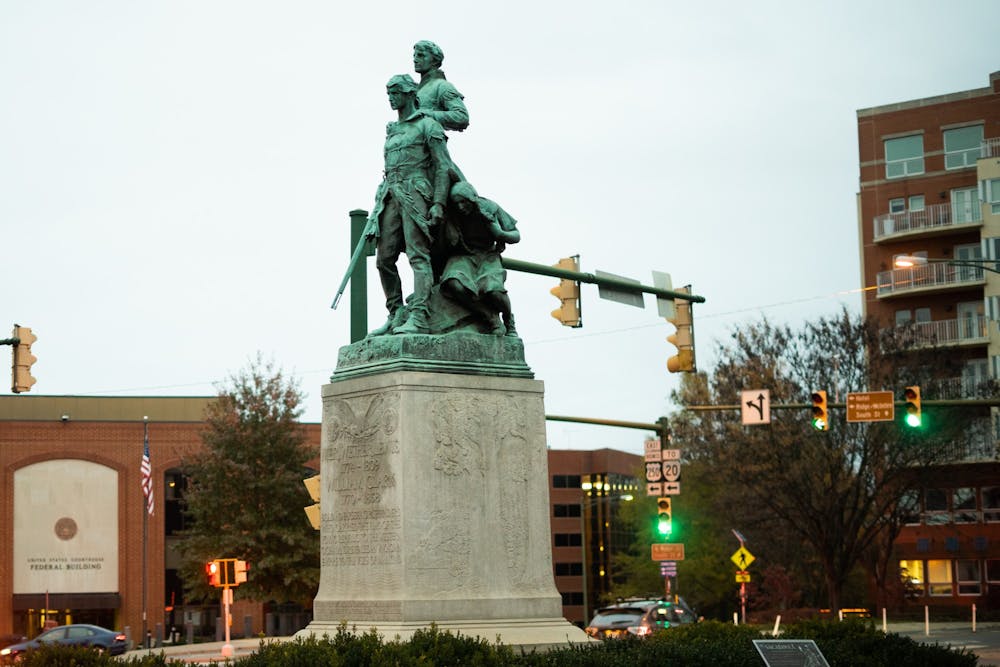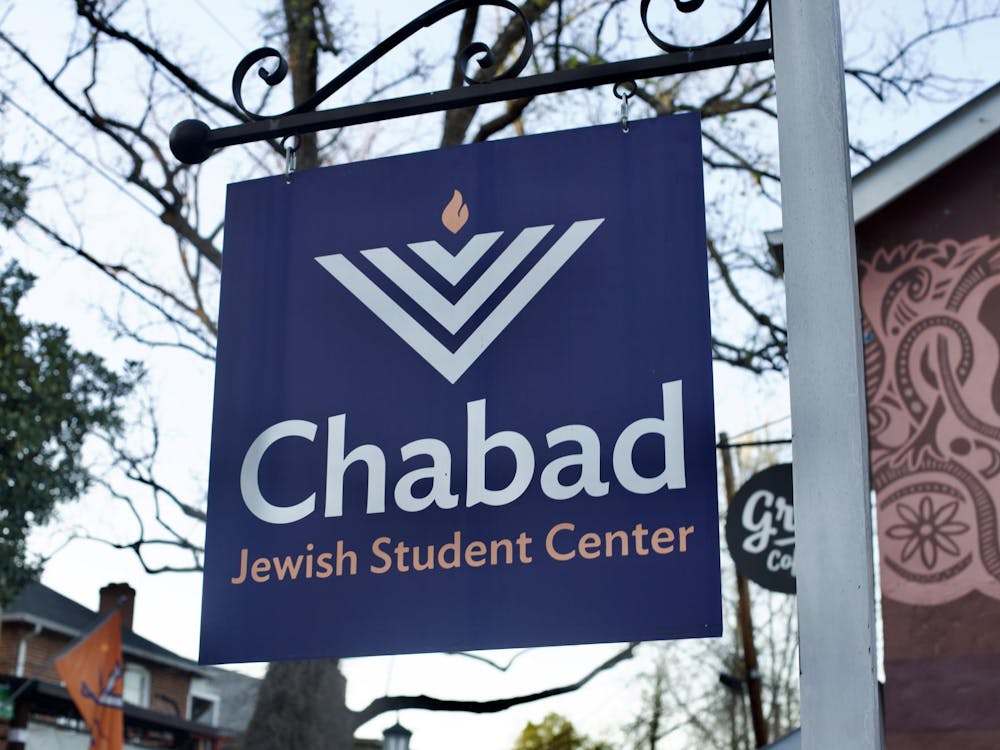The Charlottesville City Council met at Carver Recreation Center Friday morning for a work session in collaboration with members of the Shoshone-Bannock tribe and Monacan Indian Nation to discuss the future of the statue that resides in West Main Street's major intersection and depicts Sacagawea cowering behind Meriwether Lewis and William Clark. The session included a presentation from City staff, statements from the Shoshone representatives and a two part discussion regarding the statue. Roughly 30 local residents were in attendance.
With the West Main Streetscape project underway — a project which aims to reconfigure West Main Street from Jefferson Park Avenue to Ridge McIntire Road — questions of the statue’s placement have arisen. The original proposal regarding the statue asked that the figure be moved 20 feet southwest in order to meet design changes. However, with construction not scheduled to begin until 2021, the indigenous representatives in attendance Friday called for the statue’s total and immediate removal.
After discussions with the attendees, Mayor Nikuyah Walker asked the Council to consider a resolution that calls for preparations to be made for the removal of the statue. The resolution directed staff to present a quote for the statue’s removal, a timeline for the procedure and offer viable options for disposal.
An amendment was then added by City councilor Kathy Galvin for the staff to “present a plan to the Council of a new statue of Sacagawea and other memorializations of Virginia native peoples with primary consultation from indigenous people on the design of the statue and other memorializations of Virginia native people.”
Both the amendment and resolution that called for staff preparations passed unanimously. The following Council meeting will include further conversations on future steps for removal and replacement of the statue once the plans have been developed. Indigenous representatives present at the session emphasized that action from the City was long overdue.
“When are we going to do something about it instead of just giving it lip service?” Chief Branham of the Monacan Indian Nation said. “We are talking about the true history of this country and the contribution that that Native people have given.”
Rose Ann Abrahamson, a Lemhi Shoshone and descendant of Sacagawea, referred to the submissive position of Sacagawea in the statue as “outwardly offensive.” Abrahamson remarked on the historical climate of when the statue was constructed.
“It was during a time period of intolerance, misinformation, discrimination and witless perspectus of people of color and America’s natives,” Abrahmson said.
Today, she believes that Virginia’s indigenous people should no longer have to be ashamed of their identities and advocated for removal of the statue from the intersection. In its place, Abrahamson proposed the reconstruction of a statue that placed Sacagawea, Lewis and Clark on equal footing — a change that would recognize the fullness of her contributions to pioneering the American west.
“We need to show images of integrity, equity and tolerance in our public forums” Abrahamson stated.
Her daughter, Dustina Abrahamson, was also present as a Lemhi Shoshone representative.
“We need to start looking forward to a greater future,” Dustina Abrahamson said.
To address the issue of the statue’s placement after removal, Galvin stated that the Lewis and Clark Exploratory Center in Charlottesville has already expressed their willingness to house the statue. If it is chosen to be displayed, Abrahamson called for a supplementary exhibit to be paired with the statue to describe Sacagawea’s contributions in length and condemn the white supremacy it represents.
Conversations were then held to discuss the replacement of the statue with another monument that honors not only the true history of Sacagawea but also the presence and history of other Virginian indigenous groups.
Jeff Werner, the City’s historic preservation and design planner, opened the session by providing a summary of the statue’s history. The statue — titled, “The First View of the Pacific” — was sculpted in 1919 and was made to commemorate the U.S. exhibition to the west coast. The statue was commissioned by Paul Goodloe McIntire, the namesake of the University’s McIntire School of Commerce, who was also a benefactor in the construction of widely-criticized local statues depicting George Rogers Clark as “Conqueror of the Northwest,” and of Confederate generals Robert E. Lee and Thomas “Stonewall” Jackson.
In 2007, a coalition of citizens and indigenous people appealed to the City Council, voicing their concerns on Sacagawea’s portrayal in the statue. The Council responded by commissioning the placement of a 12-by-16 inch bronze plaque in front of the statue to commemorate Sacagawea’s contributions to the exhibition. The removal of the statue was not a topic of conversation at the 2007 meeting. The plaque was unveiled in 2009.
Many representatives present at the session expressed the sense of urgency and importance that surrounds City decisions regarding historical landmarks. Protests sparked in response to the City’s proposed removal of the Robert E. Lee monument, and organizers of the white supremacist Unite the Right rallies of August 2017 said their protests were in response to the City’s attempt to remove the statues.
Additionally, a petition was circulated this summer calling for the University to remove the statue of George Rogers Clark on West Main Street. The statue was found defaced with red paint Sunday morning. University police responded to the defacement by covering the statue with a black tarp. The statue is located on University property and shows Clark on horseback, confronting a Native American chief with a group of Native Americans depicted kneeling in front of Clark.
City Councilor Mike Signer commented on the proposed redesign of the intersection’s park, stating that removing the statue with Sacagawea is a step in the right direction. The controversial Lee and Jackson statues located Downtown cannot be so easily removed because of a Virginia state law that currently protects Civil War monuments.
“It could be a real opportunity for us to have a testimonial to a lot of what has happened in the community in that last couple of years with regard to history, tolerance, inclusion and pluralism,” Signer said.







